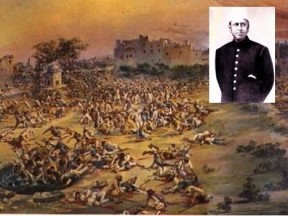Indians, by and large, don’t need to be told about the Jallianwala Bagh massacre, leave alone reminded. We know Mohandas Gandhi had remarked at the time: “Plassey laid the foundation of the British Empire; Amritsar has shaken it.” We remember Rabindranath Tagore renouncing his knighthood given by the British. We also have been told of the Daily Herald, London, remarking in an editorial, “No blacker or fouler story has ever been told.”
What we don’t know of is a man called ‘Pandit’ K Santanam, without whose untiring efforts, all the events surrounding the Baisakhi Day massacre besides the mass murder itself could never have been pieced together. But someone somewhere has now remembered, and the Department of Posts is issuing on August 25, a postage stamp in his honour.
In October 1919, the Legislative Council of the Government of India appointed a commission to be led by Lord William Hunter and assisted by five Englishmen and four Indians. The panel was entrusted with the examination of the violence which had occurred in Amritsar and elsewhere in Punjab. In May 1920, the Hunter Report was published. It concluded that the gathering was not the result of a pre-arranged conspiracy. It asserted that the rioting in Amritsar had turned into rebellion. The declaration of martial law was viewed as justifiable and that its application was not oppressive. The report concluded that Brigadier-General Reginald Dyer was justified in firing on the crowd, though notice should have been given and its duration shortened. The Indian members issued a minority report. They questioned the need for martial law to have been used and disputed the level of severity of the Indian disturbances.
The Indian National Congress set up its own committee to go into the tragedy. Its members included chairman Gandhi, CR Das, Abbas S Tyabji, and MR Jayakar. The committee’s secretary was K Santanam, who painstakingly compiled a two-volume report after touring Punjab and talking to hundreds of survivors of the massacre and the families of those killed. Published in 1920, its second volume contained 784 pages of direct and incriminating evidence.
If the world today knows how horrific the massacre was, it was only due to the work of Santanam, a conservative Iyengar who had left his native Tamil Nadu to live in Lahore. The Hunter Commission had buried the facts, Santanam had unearthed them.
Santanam died on August 31, 1949. It has taken the Indian government 62 years to wake up to his contribution to the nation that we are so proud of. Without Santanam’s meticulous work, Jallianwalla Bagh would have remained just a story, and not a historical fact.
PS: K Santanam has many a namesakes, including one who was part of the team that conducted Pokhran II. The latter is definitely better known than the one written about here.
Subir Ghosh is a New Delhi-based independent journalist and writer. He is the author of ‘Frontier Travails: Northeast – The Politics of a Mess’ published by Macmillan India, and has won two national awards in children’s fiction. His subjects of interest include conflict, ethnicities, wildlife, human rights, poverty, media, and cinema. He blogs at www.write2kill.in where the above story was published first.






